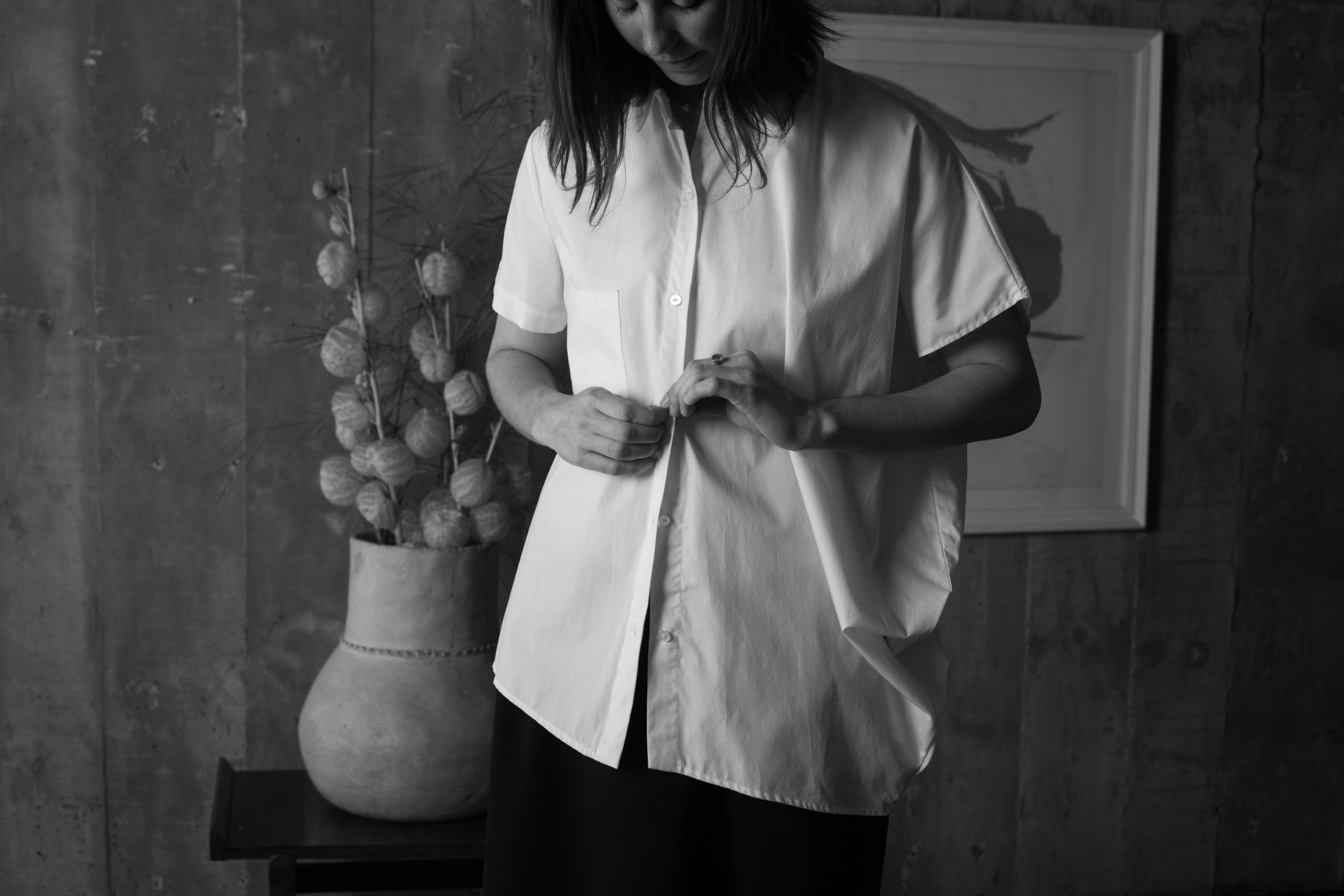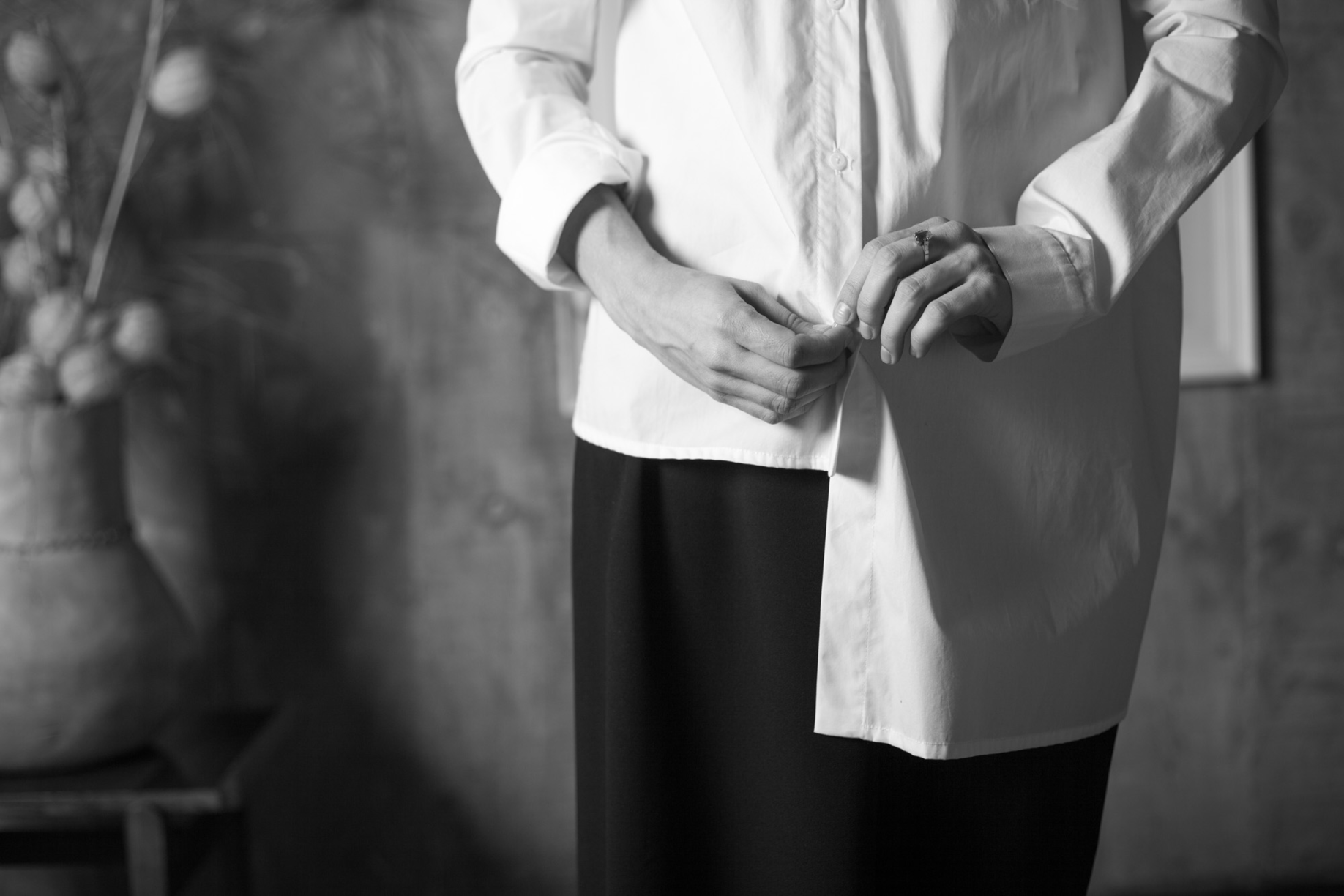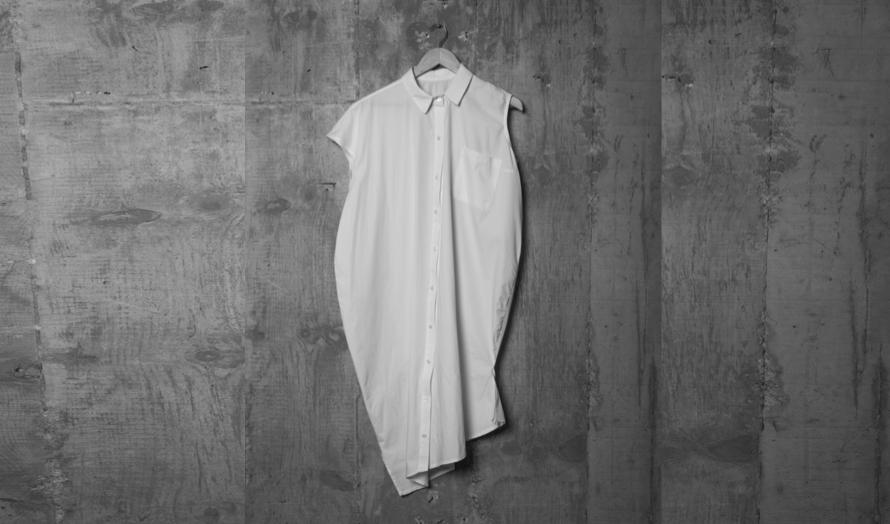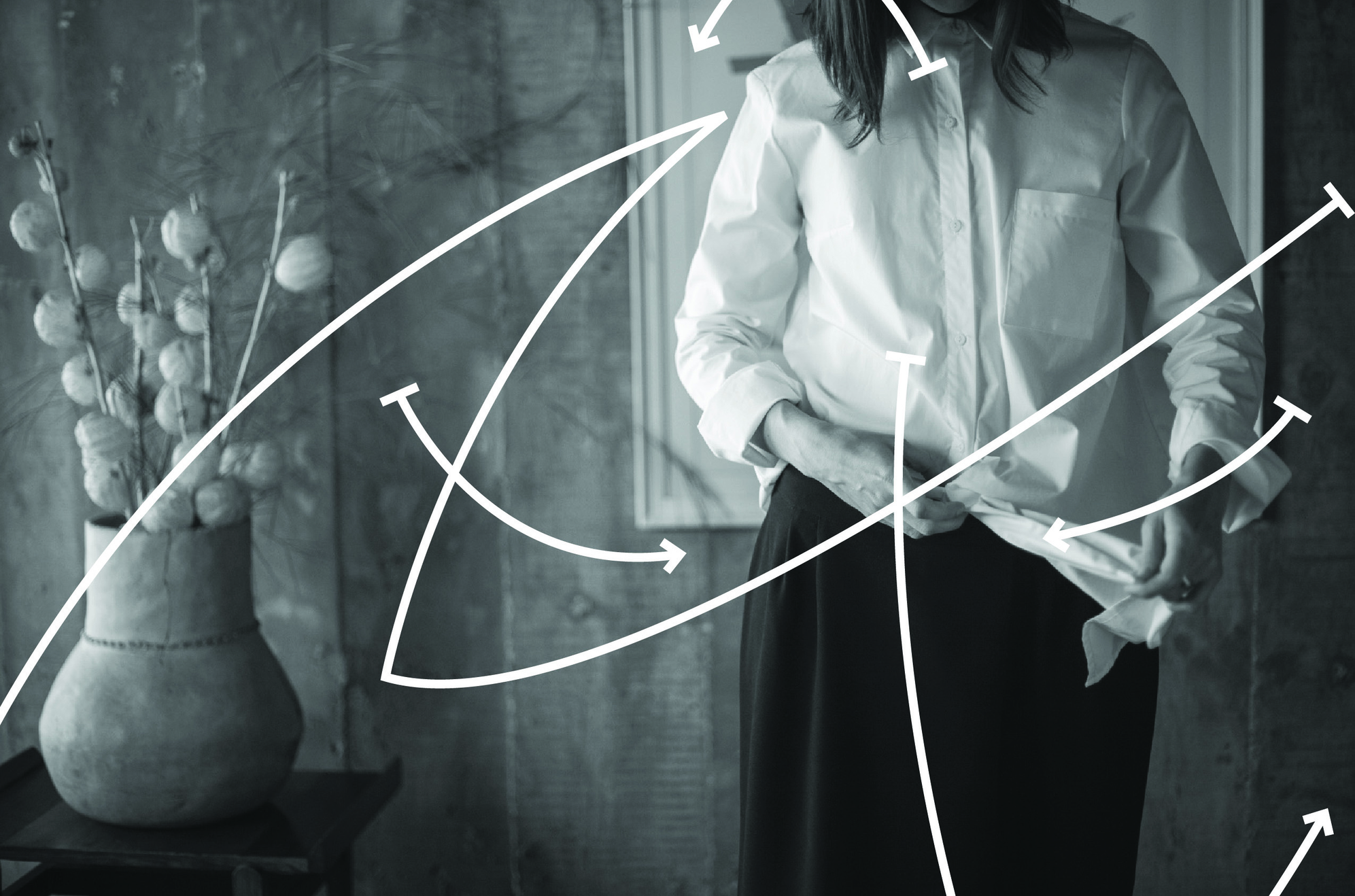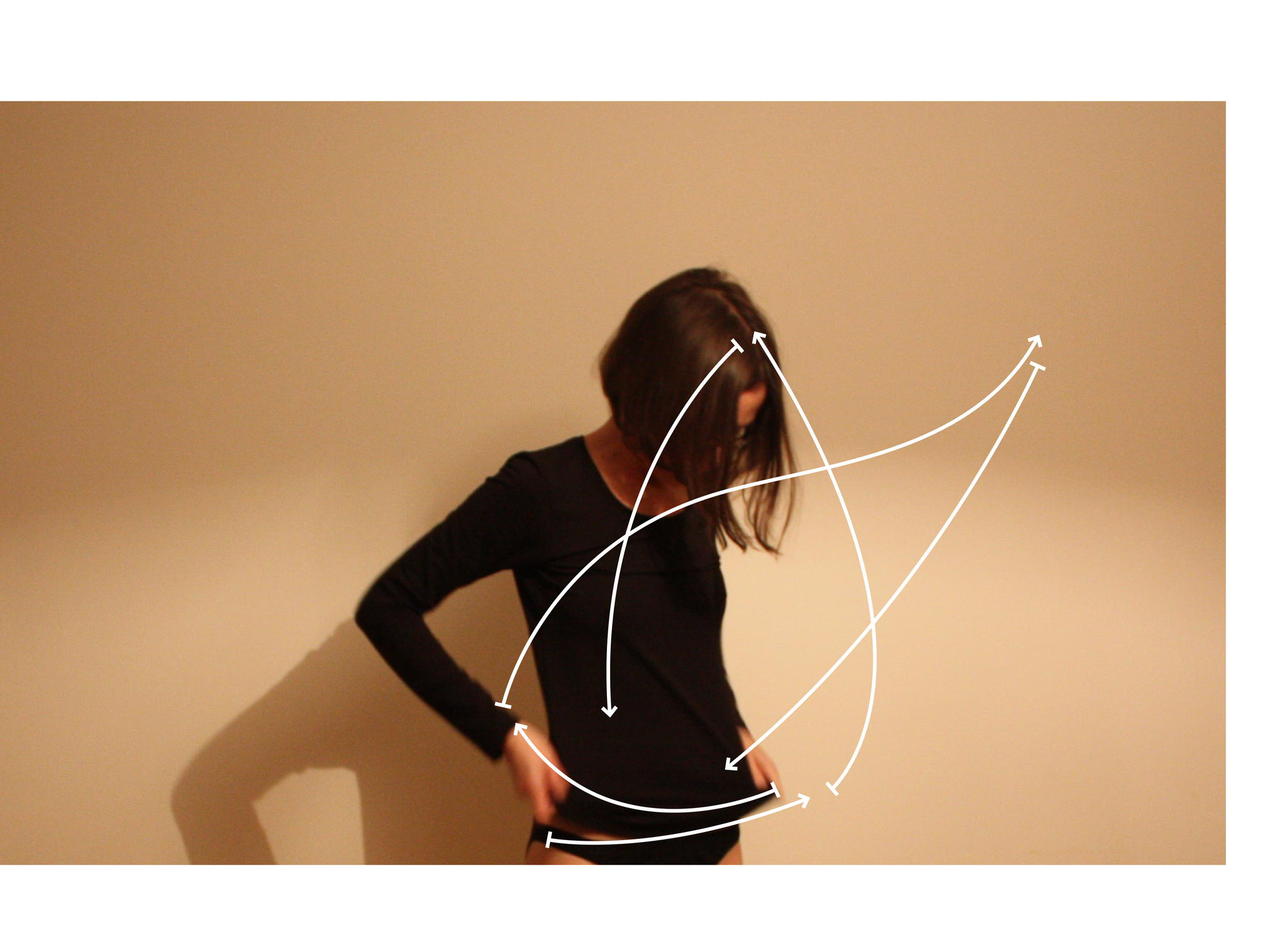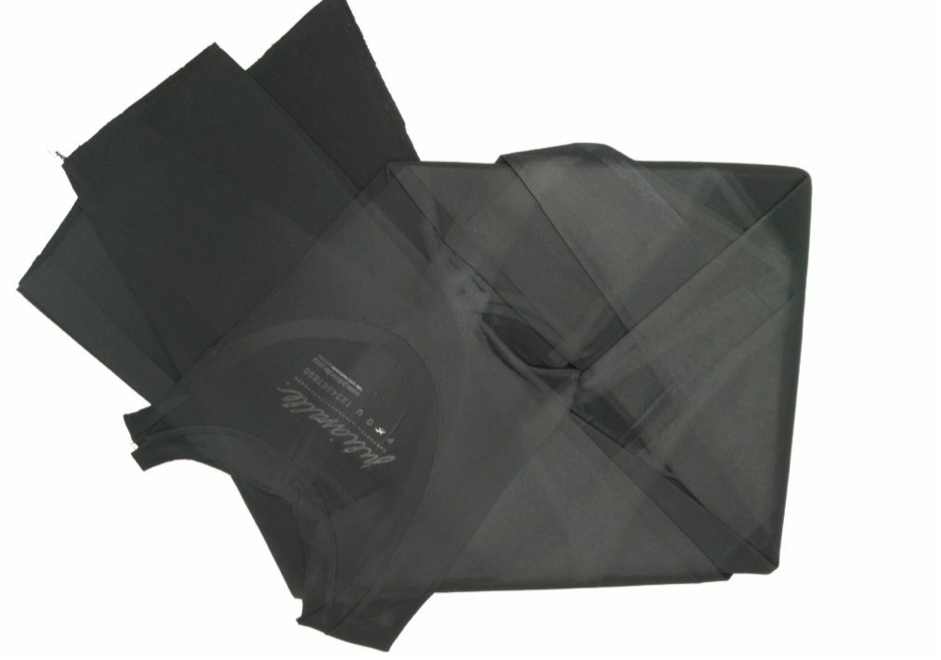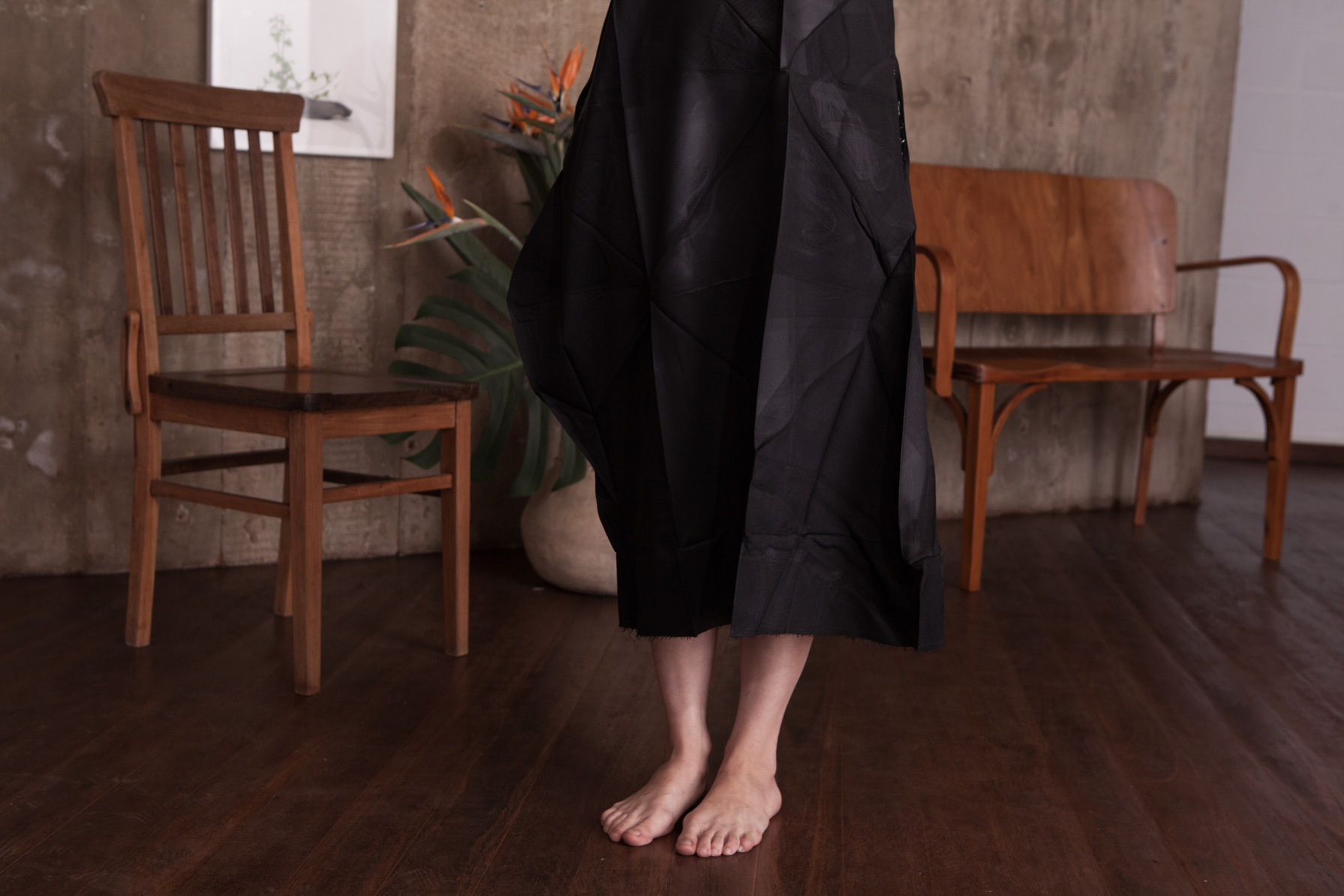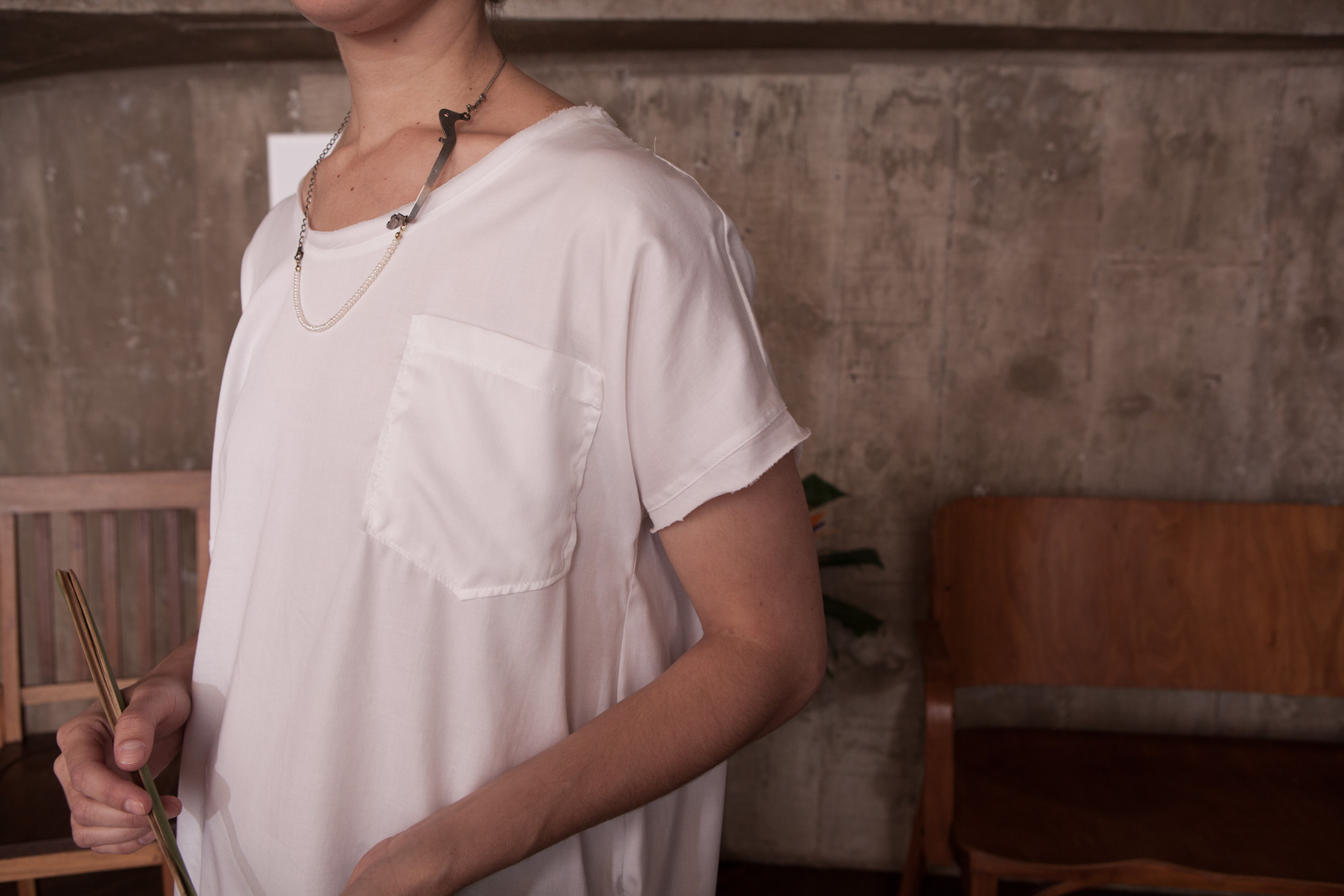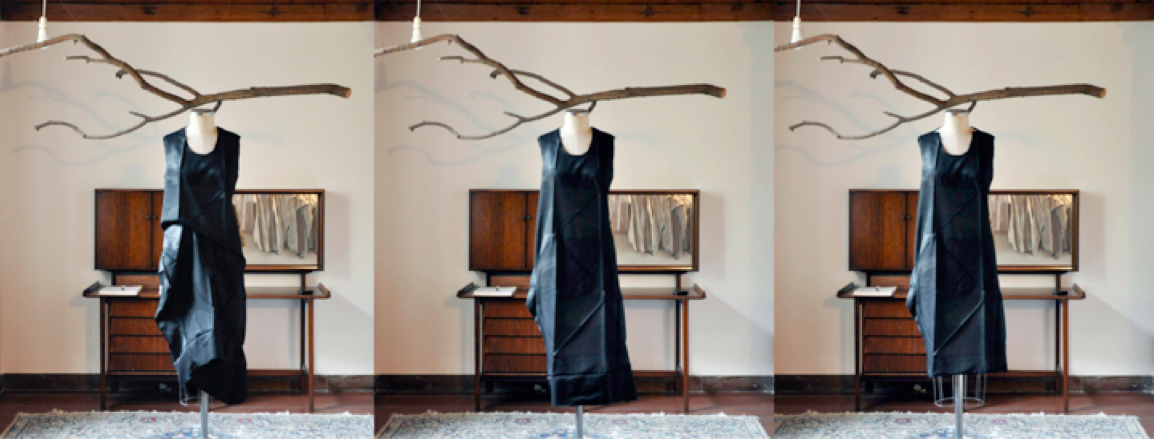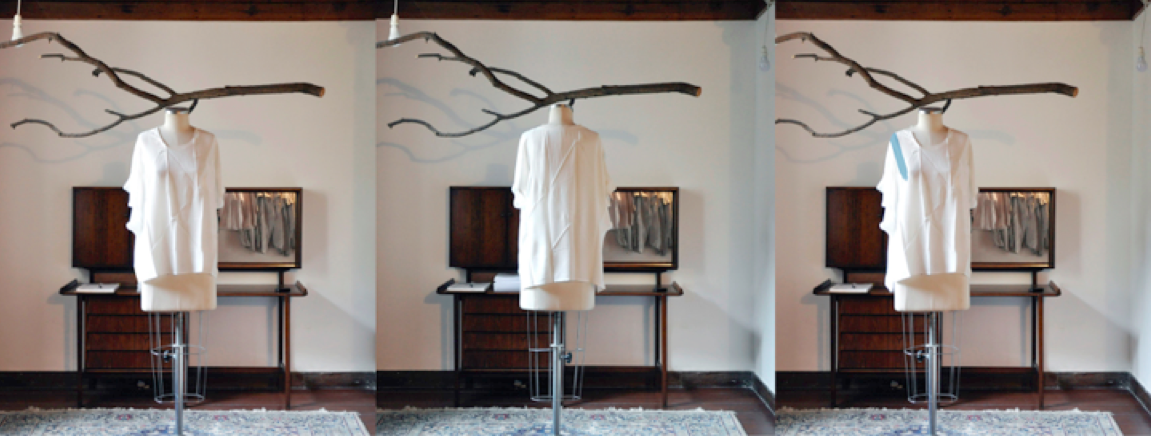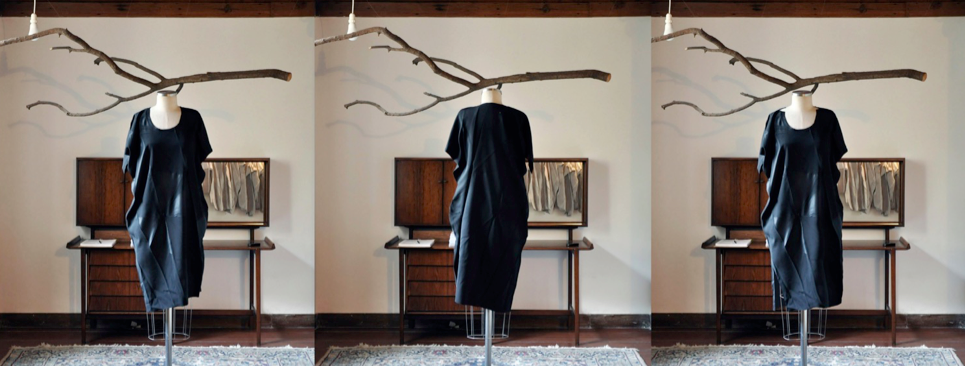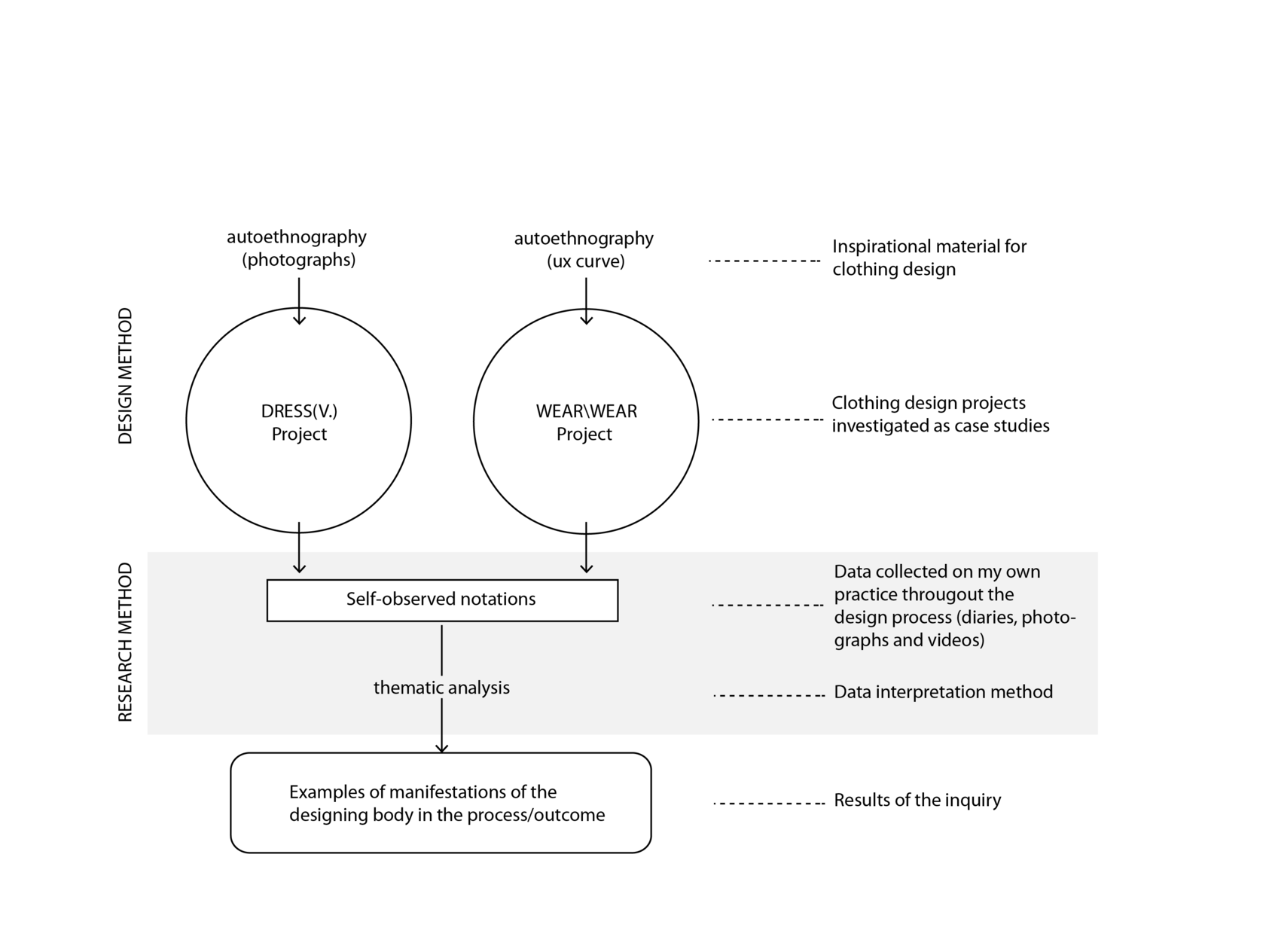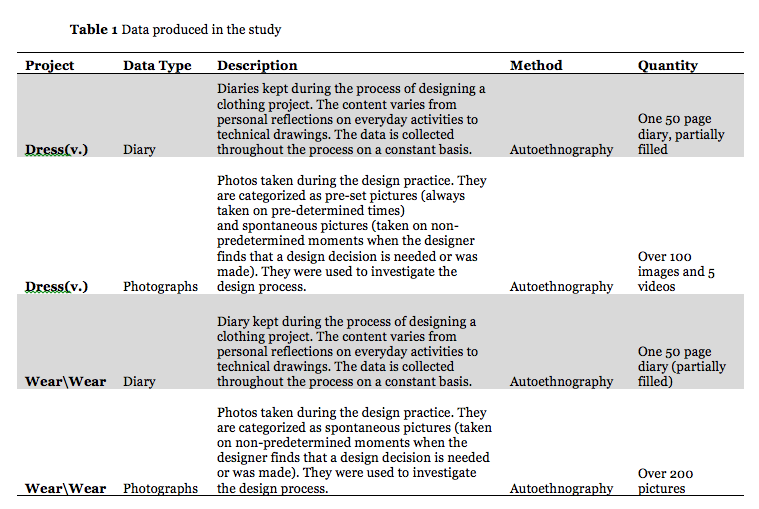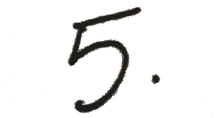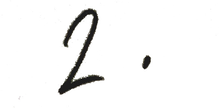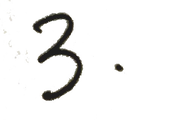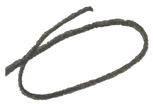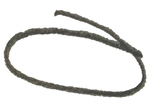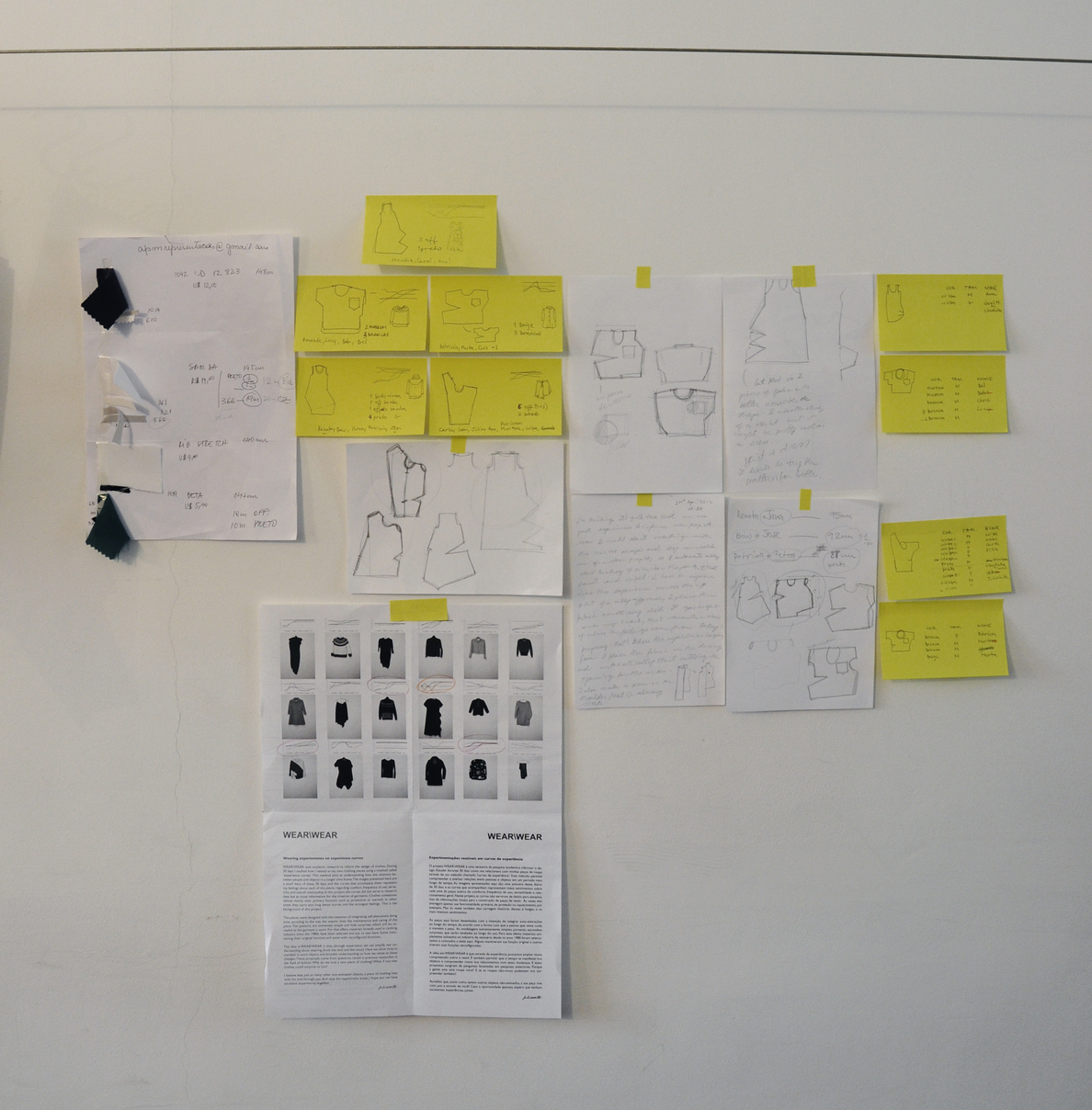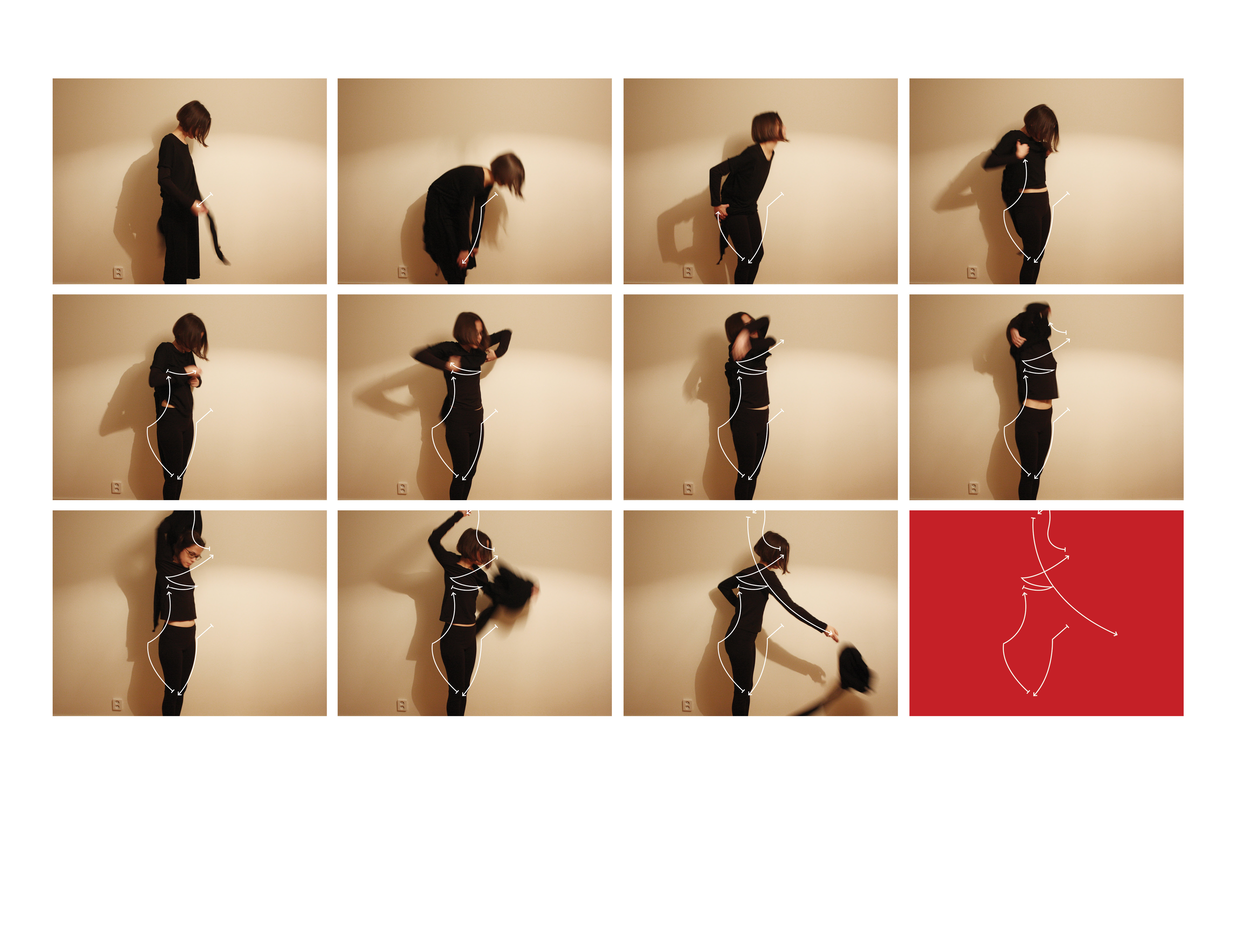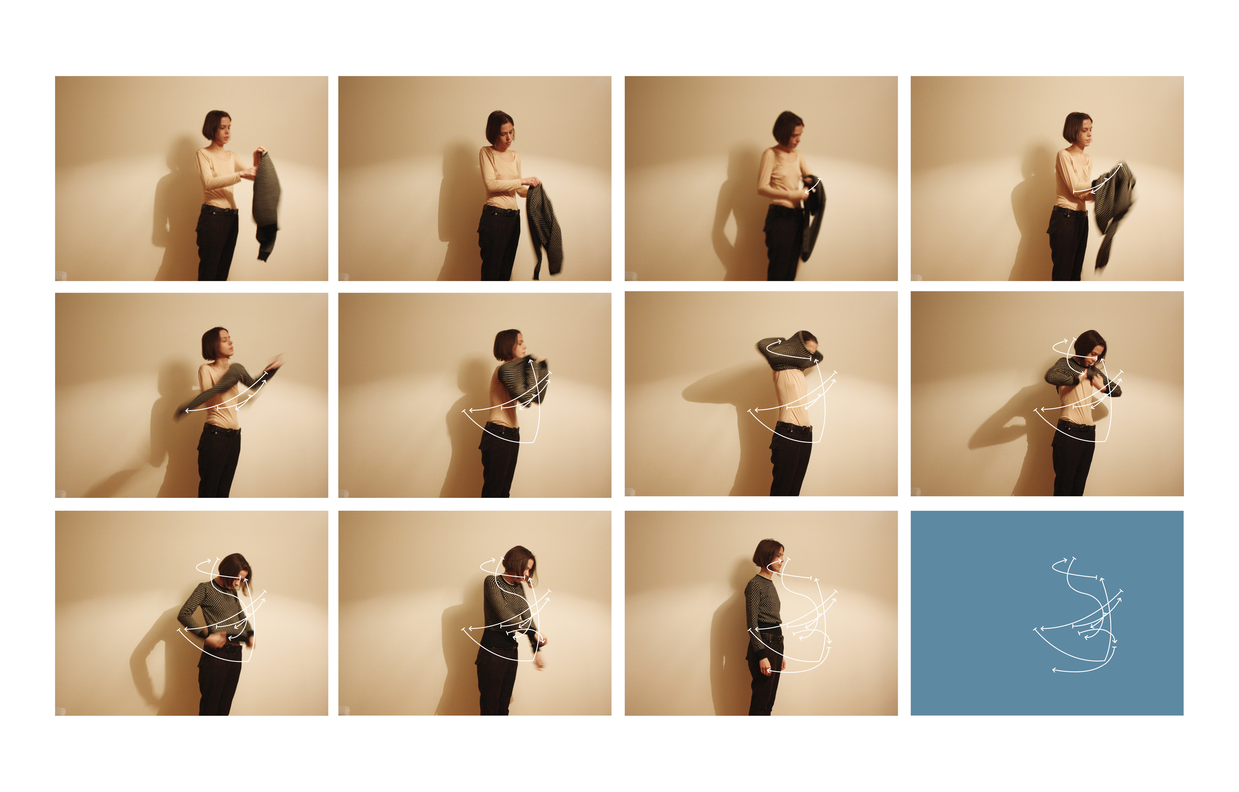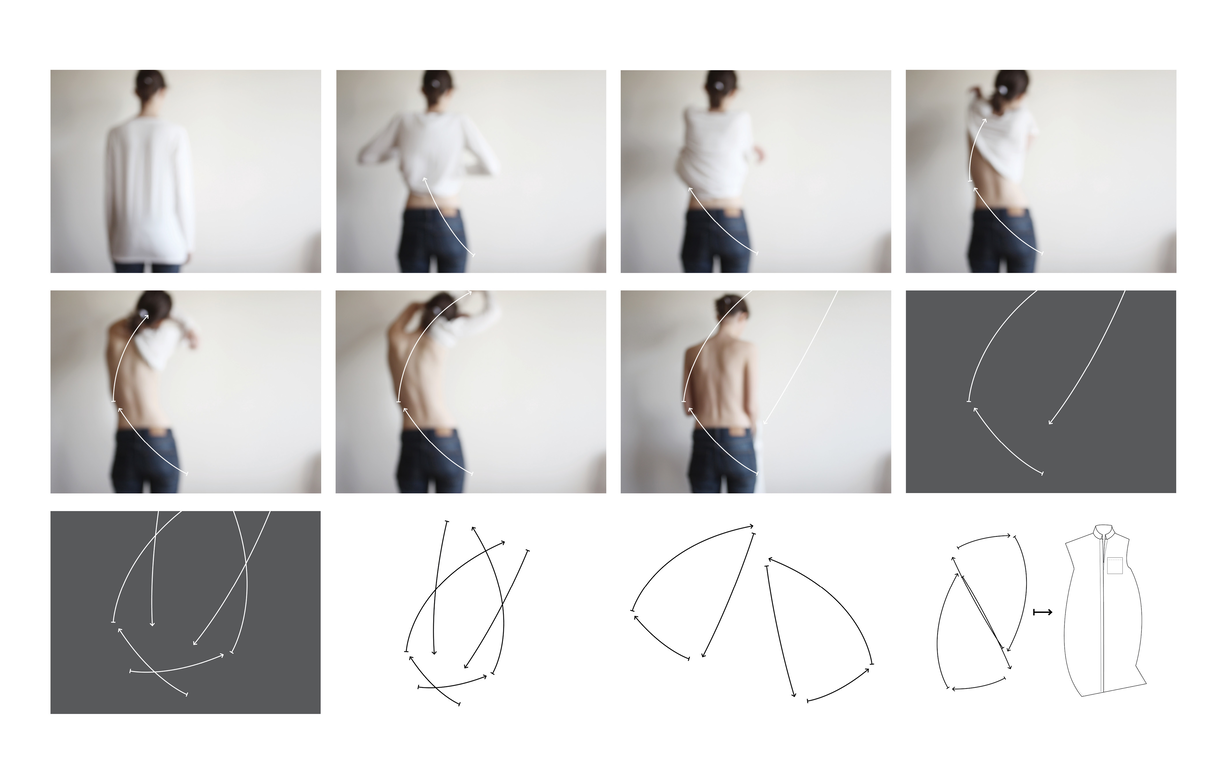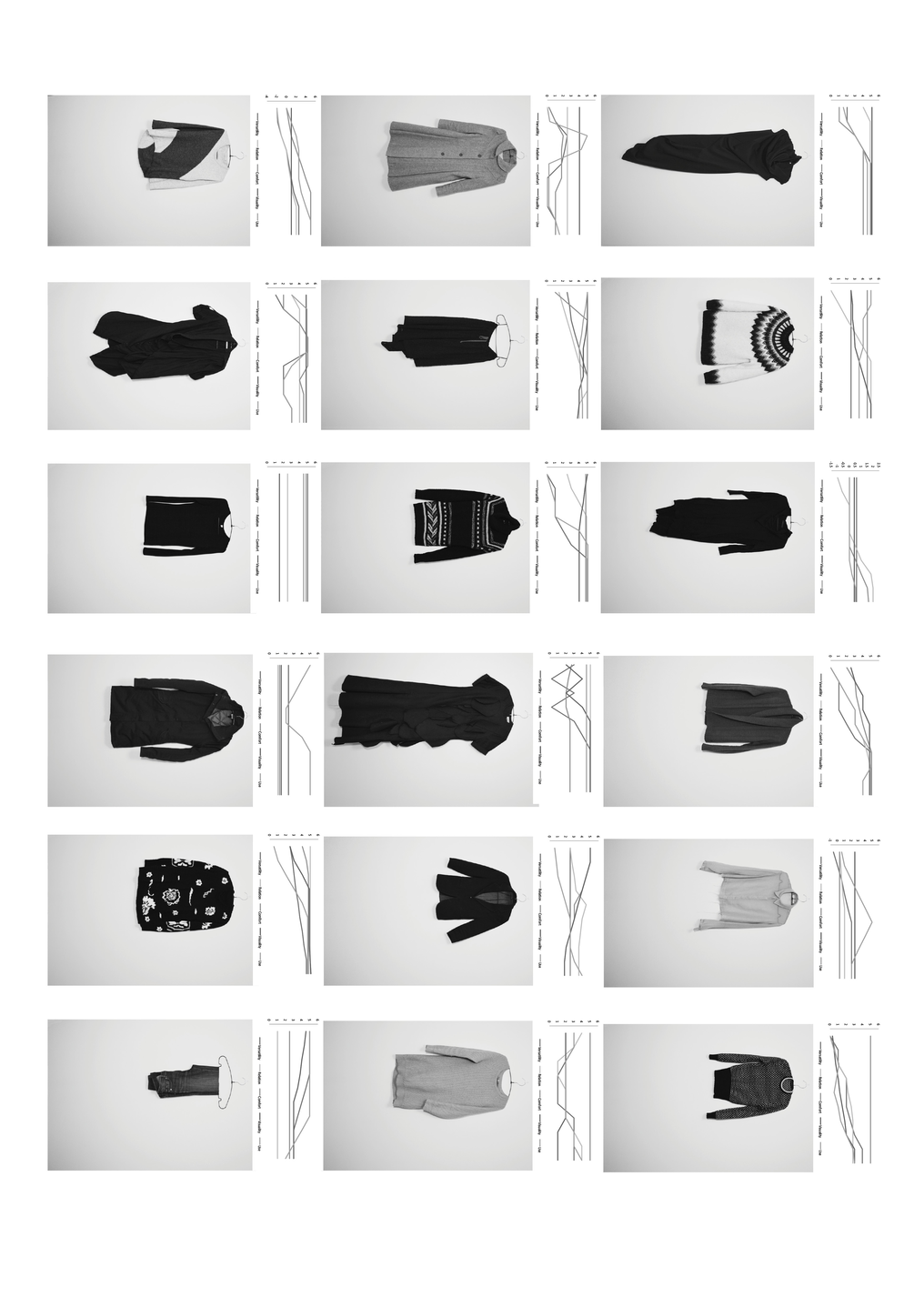Interested in wearing as a field of investigation, recent works a subjective
perspective on how people and clothes relate, building especially from artistic
research methods. In these investigations, the designer’s body becomes both
object of and tool for research. Some examples concentrate on investigating the
process of constructing a garment (Lee 2012), living and caring for clothes
(Spława-Neyman 2014) and making and wearing shoes (Sampson 2016). Yeseung
Lee (2012) makes a comparison between the processes of constructing, wearing
and researching through the making of a seamless garment. Through this, she
investigates the construction of the self as a fluid process supported by theories in
a wide range of fields such as fashion, philosophy, and anthropology. The
continuous process of becoming is also discussed in the work of Tania Spława-
Neyman (2014), but centred on the idea of care. Borrowing concepts from design
and philosophy, she opens a discussion concerned with sustainability issues and
how an awareness of the situatedness of our practices changes how we engage
with clothes. The work of Ellen Sampson (2016), though not focused on clothes,
dives into the experience of making and wearing shoes and how these experiences
are embodied on both wearer (in her case also the maker) and worn. Later
expanding on the concept of wearing, Sampson (2018) advocates for wearing as
an important methodological approach in fashion studies. It is generally agreed
that clothes may become fashion through wearing (Loschek 2009). In all these
examples, the body of the maker is essential to the ways in which the work
develops and unfolds. Through this works, the concept of wear, thus, becomes
essential to discuss the relationships between people and clothes beyond
wardrobe practices. Wearing deeply impact our lives as wearers, and
consequently, as designers.
Academic enquiry on how fashion designers work and think is a slightly older
field of investigation (e.g. LaBat and Sokolowski 1999, Bye 2010, Ræbild 2015)
with recent additions coming also from designers investigating their own activity
(e.g. Stead 2005, Dunlop 2011, Gwilt 2012). They reveal how clothing pieces are
created, exposing the work of fashion designers to the outside world. The field of
pattern cutting, an essential stage in the creation of clothes, is probably one of the
scopes with the largest amount of contributions in research into fashion practice
(Valle-Noronha and Chun 2018). Within it, most of the attention is given to the
development of pattern cutting methods and the final outcomes, with little focus
on the experience of wearing (e.g. Rissanen 2013). Some works, on the other
hand, take the motility of the human body as a point of departure, but still, the
experience of wearing is little discussed (e.g. Simões 2012, Lindqvist 2015).
These two streams of investigation (autoethnography and fashion practice) help
understand fashion design from the creative process to the use phase. By
investigating the creative process of making clothes informed by
autoethnographic notations on daily wearing practices, this study can be situated
in the intersection between these three streams of works. It aims at discussing the
entailments of the situated designer’s body (not dissociable to its mind) in the
designing process when visually inspired by these wearing practices. In order to
do that, it asks ‘how can the body of the designer be used to inform the design
process?’
By proposing wearing and dressing as sources of inspiration to a design process,
this study seeks to understand the ways in which the materiality of the designer’s
body is involved in the creating and making processes. It is hoped that the
process can enlighten fashion designers and researchers in fashion to expand the
inquiries into alternative creative methods and a further understanding of the
embodied presence of the designer in designed clothes.
The experiences we go through deeply affect us, changing the ways we exist and
act in the world. Philosopher Maurice Merleau-Ponty (1964) defines this as a
‘being in the world’. While being in the world we are constantly affected by what
he calls ‘a world’s instant’—or the complex entanglement of an infinity of factors
that composes the instant we find ourselves in. To exemplify this, my world’s
instant as I am writing this paragraph includes the texture of the wool on my skin,
the snow falling outside the window in contrast with the warmth provided by the
heater inside, the noise coming from the neighbour’s radio in a similar rhythm as
the fridge and the smell from the flowers, sitting in a vase less than a metre away
from me, to name but a few. The long sleeve of the woollen sweater protects my
wrist from the sharp edge of the computer keyboard and lets me write for a longer
period of time. But the snowstorm keeps dragging my attention to the outside, at
times interrupting a sequence of thought. The ways we act are thus situated in
place and time and deeply affected by the things that surround us.
This work departs from the observation that a body that designs (clothes) is
invariably a body that wears clothes (be them made of textiles, feathers or beads).
It explores the situatedness of the designer’s body through the practices of
dressing, wearing and making via revised phenomenological approach (Merleau-
Ponty 2012, Verbeek 2005). Particularly, the study is interested in how the body of
the maker, via the experiences one has with the clothes they wear, can be used to
inform the design process. To explore this enquiry, two projects in creative pattern
cutting are studied, Dress(v.) and Wear\Wear and serve as cases to investigate the
designer’s body within the final outcomes as clothes.
In mainstream methods for constructing garments, such as moulage and flat-
patterns, a sketch is usually the starting point, having the human body as a
tridimensional reference, for what the designer wants to achieve (Bye 2010).
Later, he/she develops a flat pattern with instructions aiming at a specific
outcome, which is as similar as possible to the initial sketch. An iterative process
then takes place in four steps (1) cutting the pattern in cloth, (2) sewing it
together, (3) fitting it on a human body to identify issues (4) fixing issues on the
flat pattern. This process is repeated a series of times until the piece is finally
approved for production. Though it is undoubtful that the pattern maker’s body is
present in the final outcomes, it is the designer’s sketch that directs the results,
with little room for detours and creative freedom during the pattern cutting stage.
Though this is the main approach to designing garments, especially for mass-
produced pieces, alternative methods exist. Fashion researcher Ulla Ræbild
(2015) has described a series of alternative approaches in which the sketch may be
seen as optional (see Ræbild 2015, 232-275).
The projects draw attention to the dialogues set between design processes and the
designer’s body as they interact. They highlight the situatedness of design
processes taking into consideration the designer’s bodily experience as
inspirational material and informative source. The videos* below illustrate the
autoethnography on the two projects. The following subsections introduce how the
subjective experiences unfolded as the design process.
This exposition is divided into seven sections. Section one starts off with a brief
discussion on how the practices of ‘wearing’ and ‘designing’ clothes as a subject of
enquiry have been shadowed by fashion studies (Ruggerone 2017, Finn 2014). The
second section presents academic efforts to fulfil this gap with the newly emerging
field of autoethnographies through works that take wearing as a method of
enquiry and cases in fashion design practice. Following, aware of the state of
fashion studies that look into wearing, the third section outlines its scope of action
—that of creative pattern cutting informed by the designer’s practices of wearing
and dressing. Here, my practice is situated among the different pattern cutting
approaches and the methods chosen for the study are described. Fourth and fifth
sections introduce the two projects, Dress(v.) and Wear\Wear, respectively. The
results of the investigation, grounded on autoethnographic records of the pattern
cutting practice, are presented in the fifth section followed by a discussion and
conclusion.
When I first tried the pair of trousers that I wear now as I write, I knew not much
more than its visual qualities. As I wore it outside the shop, at home, and in the
world, I experienced the feeling of having my balance shifted, whilst keeping me
embraced, though perhaps not resulting in a very flattering form to the more
normative gazes. The wide folds around the waist, the one narrowing leg and the
overall movement of the fabric were built with unexpected experimentalism. The
warmth of the wool was comforting, and the weight of viscose could be felt on how
the fabric hung in a wavy form. It made me curious about who was that
designer/pattern cutter and what was the process that led him/her to that final
shape. Wearing that one piece made me wonder what life experiences would that
maker have to share, more than coming to the conclusion on how unquestionably
a skilled professional in the field he/she was.
Since Donna Haraway’s call for situatedness (1988), much has been discussed on
the fact that our doings/makings reflect our situated experiences of the world,
especially in the field of arts. This article sheds light in a less explored field; that of
creative processes in pattern cutting for clothes, as to further understand the
question above. Whilst the presence of the designer’s body has been reflected
upon in the testing stage of the design phase – as designers use their own bodies
to ‘feel’ the fit and fall of a piece (Ræbild 2015)—little has been reflected on how it
affects the stages that precede the manufacturing of clothes, i.e. the creative
process from its early beginnings. This little explored field is, thus, the core of
interest of this study.
The method in this work unfolds in two parts, which encompass the phase that
precedes de design (done with the support of autoethnography inspired methods)
and the design stage per se (in which the design activity is investigated via
another auto ethnographic collection of data). The ways in which the study was
carried is further explained below and on Figure 1.
The design practice is observed from a phenomenological perspective, in which
diaries, photos, and videos were kept to inform longitudinal data about the
experience of creating and making clothes. The nature of the data produced via
autoethnography is understood as descriptive data (Creswell 2007). A
phenomenological approach was used to investigate the material produced using
an interpretative approach (Creswell 2007). In interpreting data, diaries were
initially read through and open coded. At a second stage, they were re-read under
a thematic interpretation, in which the three categories—stemmed from the initial
open coding process—were sought within the data. The photographs and videos
served as visual support to the findings. The results of the inquiry draw examples
of manifestations of the designing body in the process and outcomes of making
garments.
The following sections 4 and 5 bring a descriptive account of two projects in regard
to the design process.
[stills from the video - using my hands to measure the width of a shirt] (video diaries, 04.06.2015)
“After I try the cut piece on myself [...] I decide to make a fold on the back and also add the alcohol thread there.” (diary note, 27.04.2016)
“[After testing the piece on my own body] I have to make the arms [sleeves] because only leaving openings doesn’t seem to work so well.” (diary note, 06.06.2015)
"[This is] something I have learnt from my previous experiences working as a commercial fashion designer.” (diary note, 14.05.2015)
“I did not want to have them [the ux curves] so literal [in the pattern cutting], but it seems that it would be an interesting way to have the users perceiving it more physically than just in an abstract way. In the previous project they did mention that while taking care of the piece they could see some of the pattern cutting [outline].” (diary note, 22.04.2016)
“[about a dress being cut with only one side seam, part of my designer repertoire] Never did [this kind of dress] in a woven fabric, but I think it is worth trying” (diary note, 27.04.2016)
“Now I will start working with the curves shapes and they reminded me of another project, so I automatically start thinking of similar shapes. [...] I have to explore more the experience curves.” (diary note, 21.04.2016)
“[...] I also make a dart on the shoulder that I always make, so the fabric falls better on the body” (diary note, 21.04.2016)
“[After being frustrated with the outcomes of experimenting with the ux curve lines, I try an approach, familiar to me, of making a list of instructions and sticking to it as a support to the creative process] - use only ONE curve for each piece - keep it simple - make the curves clear on the piece - surprise, surprise. [...] make at least one [surprise] happening on each piece” (diary note, 22.04.2016)
To know how to type is not, then, to know the place of each letter among the keys, nor even to have acquired a conditioned reflex for each one, which is set in motion by the letter as it comes before our eye. If habit is neither a form of knowledge nor an involuntary action, what then is it? It is knowledge in the hands, which is forthcoming only when bodily effort is made, and cannot be formulated in detachment from that effort. The subject knows where the letters are on the typewriter as we know where one of our limbs is, through a knowledge bred of familiarity which does not give us a position in objective space. (2005, p. 166)
“[...] theories of fashion have focused almost exclusively on why people dress the way they do, while very little has been said about how they [...] get dressed in the first place. To put it in other words, the emphasis has been on the communicative aspect of clothes, with a veil of silence thrown over the taken-for-granted spatial practices that underpin the sartorial system.” (Cwerner 2001, 81)
“[...] autoethnographic methods recognize the reflections and refractions of multiple selves in contexts that arguably transform the authorial “I” to an existential “we”.” (Spry, 2001 p. 711)
